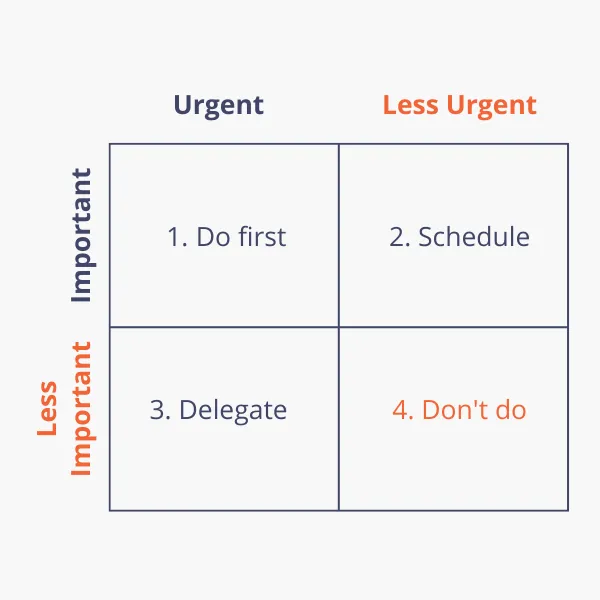How to Prioritize Your To-Do List
Table of contents

The Eisenhower matrix is a method anyone can use to visualize and prioritize your to-do list to ensure everything is accounted for and completed on time.
Sometimes you might have that to-do list that feels like it is never-ending. In those situations - often, you might need help figuring out where to begin. What is the most important, what will take the most time, and what can wait until tomorrow? All of these are questions are things that you might find yourself spiraling within your head. But knowing how to tackle your list will make you better prepared for the day or week ahead of you. This blog will show you how to set up an Eisenhower Matrix for your tasks. Then how to use it to turn your to-do list into a "to-done" list. (See what I did there?)
Creating an Eisenhower Matrix
The Eisenhower Matrix(opens in a new tab) also referred to as Urgent-Important Matrix, is the first step to mapping out your priorities. It breaks down your tasks into urgent, less urgent, important, and unimportant. Then, you can associate these four quadrants with different strategies for completing. Here is what this looks like:

Let's break down the four quadrants: do first, schedule, delegate, and don't do.
Do first
Your "do first" square should be the top priority. Most likely, tasks with specific deadlines or due dates. Examples could be sending an urgent email to a team you are working with, running a report for a supervisor, or reviewing a contract for your manager. You can work down the line of this list and complete the tasks using various time management techniques. I recommend using the Pomodoro Productivity Technique. I wrote about it in a blog that you can find here on our website.
Schedule
The schedule quadrant is tasks that are still important but less urgent. These can be pushed back for maybe a day or so. If it's Monday, Wednesday could be a good day to get going on these tasks. An example of a job that could be here would be watching a webinar that you requested a recording of.
Delegate
Sure, these tasks are essential, but perhaps someone else would be better suited for this job. Maybe it's a task that could quickly be passed down to someone on your team. For example, emailing out minutes from a meeting to the whole C-suite at your organization. If you just shared the minute's document with someone else on the team, they could share this document on your behalf while you work on more urgent matters.
Don't do
Lastly, the don't do quadrant. Sometimes things on your to-do list might just be taking up space. These are not really important and not urgent. They could even be burdens. It's ok to take these off your mind and the list. This is unique to everyone; what is a "don't do" for me - may be a "schedule" for someone else.
By utilizing the Eisenhower Matrix, you can begin tackling your to-do list quickly. Just grab your list, lay them out appropriately, and start to conquer your week!




